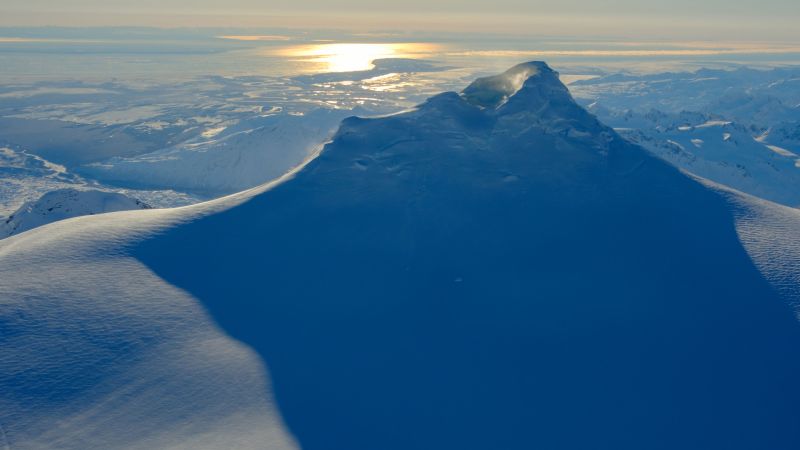
CNN —
A volcano situated near Alaska’s largest city may be on the verge of an eruption, exhibiting symptoms of activity for the past ten months, experts indicate.
The Alaska Volcano Observatory reports that hundreds of minor earthquakes have originated beneath Mount Spurr, which is located approximately 75 miles west of Anchorage in the geologically active Aleutian Arc.
Ground deformations have also been noted by experts, according to David Fee, a coordinating scientist at the Alaska Volcano Observatory.
“As magma and gases ascend within the Earth, they lead to a swelling of the ground,” Fee explained to CNN on Saturday. The rising magma and fluids can thus increase the temperature of surrounding regions as they approach the surface.
“These two significant long-term observations indicate to us that activity is taking place below the surface,” Fee continued, noting that alterations at Mount Spurr’s summit have raised concerns about a possible eruption.
“A small lake has formed within the crater, along with warmer water and gas emissions,” he added.
Despite these indications, experts cannot predict whether the volcano will erupt in the coming days, weeks, or months.
Signs likely to precede an eruption include rising water temperatures and melting snow and glaciers. For now, the focus remains on continuous monitoring.
“We draw upon our knowledge from past eruptions to help inform our predictions for future activity,” said Fee.
Currently, experts estimate a 50% probability of the volcano erupting.
Fortunately, since there are no settlements in close proximity to the volcano, “there is no immediate local threat,” noted Fee.
The primary risks associated with a volcanic eruption would involve ash clouds affecting air travel and potential ash fallout on nearby communities, including Anchorage, according to Fee.
“Explosive events lasting a few hours could generate ash clouds carried by the wind for hundreds of miles, with the uninhabited areas around Mount Spurr potentially facing pyroclastic flows, mudflows, and ballistic showers,” stated the observatory in a February 6 statement.
As of February 15, the observatory rated Mount Spurr’s volcanic alert level as “advisory,” which is one level above normal.
“Historically, Spurr has provided longer warning periods and more indicators prior to an eruption,” Fee stated. “We are diligently analyzing data from Spurr to identify any changes that could suggest an imminent eruption.”

Historical data suggests that Mount Spurr erupted once in 1953 and three times in 1992, with all eruptions occurring at the Crater Peak vent, located two miles south of the volcano’s peak.
“These eruptions were relatively minor but explosive, dispersing volcanic ash across various regions in interior, south-central, and southeastern Alaska,” noted a report from the US Geological Survey on Mount Spurr’s seismic activity.
The 1953 eruptions generated ash plumes that ascended up to 65,000 feet above sea level, depositing roughly 6 mm of ash in Anchorage, as reported.
One of the eruptions in 1992 caused the closure of the Ted Stevens Anchorage International Airport for 20 hours, leading to multiple air quality warnings in the following days.
According to Fee, if an eruption were to occur today, it would likely take place at the Crater Peak vent once again.
“There have been no eruptions from the summit of Spurr for thousands of years, which is why we believe that a future eruption is more likely to occur at Crater Peak,” Fee explained.









